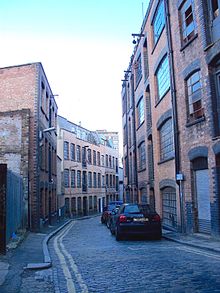Loft
Loft mainly refers to two different types of rooms. It typically refers to an upper storey or attic in a building, directly under the roof. Alternatively, it can refer to a loft apartment which is a large adaptable open space either created or converted for residential use.
Attic
An upper room or story in a building, directly under the roof, used either for storage (as in most private houses), for a specific purpose, e.g. an "organ loft" in a church, or to sleep in (sleeping loft). In this sense it is roughly synonymous with attic, the major difference being that an attic typically constitutes an entire floor of the building, while a loft covers only a few rooms, leaving one or more sides open to the lower floor. In barns a hayloft is often larger than the ground floor as it would contain a year's worth of hay.
Loft apartment

Loft apartments are apartments that are generally built into former industrial buildings. When industrial developments are developed into condominiums instead of apartments, they may be called loft condominiums. The general term warehouse-to-loft conversions may sometimes be used for development of industrial buildings into apartments and condominiums. "Loft-style" may also refer simply to developments where a street-level business occupies the first floor while apartment "lofts" are placed above the first floor.
These dwellings may advertise "exposed brick" and are the two-story equivalent of studio apartments.[citation needed] Loft apartments generally have one open room having the bedroom in a loft while the kitchen and living room comprise the first floor.[citation needed] This style may be chosen for redevelopment of industrial buildings due to the original high-roofed room design of such buildings. Sometimes, loft apartments are one component of municipal urban renewal initiatives that also include renovation of industrial buildings into art galleries and studio space as well as promotion of a new part of the city as an "arts district."
Originally popular with artists, they are now highly sought-after by other bohemians, and the gentrification of the former manufacturing sectors of large cities is now a familiar pattern. One such sector is Manhattan's Meatpacking District. The adoption of the Adaptive Reuse Ordinance (2001) in the City of Los Angeles (primarily the Arts District) is another example of such legislation to encourage the conversion of no longer economically viable industrial and commercial buildings to luxurious residential loft communities. Such is the demand for these spaces among the well-off that real estate developers have taken to creating ready-made "lofts" in urban areas that are gentrifying or that seem primed to do so. While some of these units are created by developers during the extensive and costly renovation of old buildings, a number of them are included in the floor plans of brand new developments. Both types of pre-fab loft offer wealthy buyers or renters the proximity to urban amenities afforded by traditional lofts, but without the perceived safety risks of living in economically depressed industrial areas. Detractors argue that these ready-made units are neither produced nor consumed in the spirit of traditional loft living.
Other lofts
Commercial loft
A commercial loft refers to a building that has ceilings over 17 feet in height and a second story area for storage or offices above. These are usually industrial spaces with an added office element on a second level.
Rigging loft
A raised area or gallery in a shipyard where workers stand while fitting rigging.
Sail loft
A large open space used by sailmakers to spread out sails.
Church architecture
Some churches have a choir loft, where the singers stand or sit during services. Sometimes the church organ is located in a loft.
